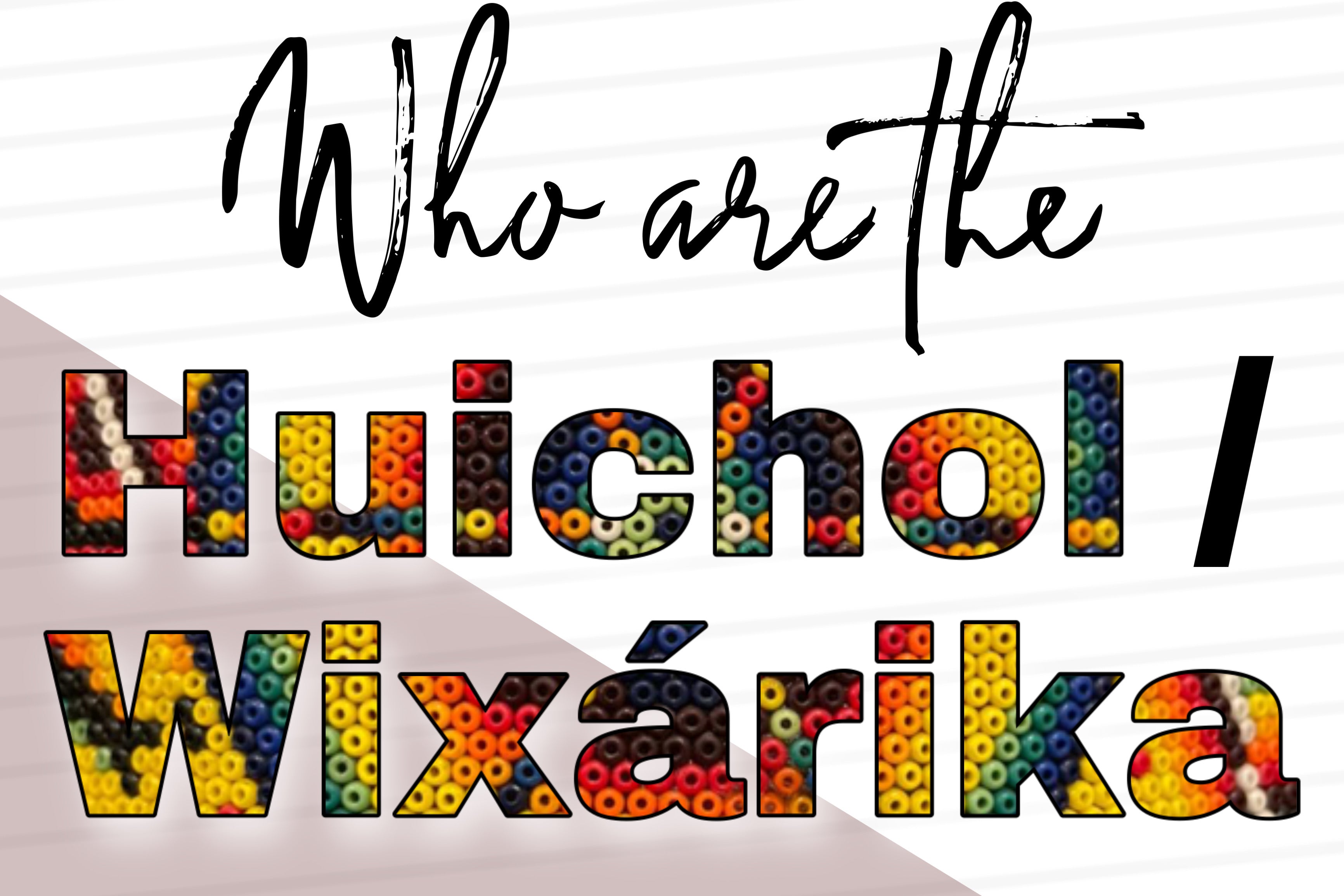The same as us, we are sure you have been stunned at the artwork and detailing behind one of Mexico’s biggest beaded forms of artwork: Huichol. The Huichol work is known for the colorful decoration using symbols and designs. Many people, both tourists and Mexicans, experience Huichol art as astonishing souvenirs in areas of tourism without knowing about the talented artisans behind the pieces and the meanings of the designs that date back centuries. That is the reason why today’s highlight will be on the Huichol, or Wixárika/Wirrárika/Wirraritari (pl), as they call themselves in their native language, meaning “the people”.

The Wixárika are an indigenous group in Mexico inhabiting the Sierra Madre Occidental range, covering the states of San Luis Potosí, Nayarit, Jalisco, Zacatecas, and Durango. The Wixárika are known as one of the few indigenous groups in Mexico who still uphold most of the traditions and lifestyle that their ancestors did; they did not assimilate into Catholicism/Christianism with the arrival of Spain to Mexico and have remained mostly like this over the centuries. Although the origin of the Wixárika is unknown, what it is known through oral histories of the community and historical documents is that the Wixárika fled to the mountains with the arrival of Spain and have remained somewhat isolated since then.
The Wixárika culture is largely influenced by spiritual connections to the elements, and it is largely shamanistic in nature. As so, every piece made by them tells a story in their artwork with these symbolic motifs filled with their religious beliefs, cultural understandings, and stories of their community. Wixárika art is distinctive for its colorful and intricate work that reflects their connection to their religious beliefs. It consists of yarn “paintings” made by pressing yarn or beads into a baseboard using a mixture of beeswax and/or resin and are derived from a ceremonial tablet called a nierika: a small square or round tablet with a hole in the center used in rituals to “communicate” with the spirit world or as a mirror to understanding the divine. There is also beaded figures that represent a myriad of figures from their daily lives as well as from their cultural beliefs.
The Wixárika have a long history of beading, using beads made out of clay, shells, corals, seeds and using them to make jewelry and to decorate bowls and other items. The same goes for the use of yarn paintings that used to have less tightened yarn that, over time, has evolved with the use of synthetic materials allowing for more vibrant colors. While the materials have changed and the purpose of many of the items have changed from religious to commercial purposes, there is little change in design and they mostly retain their cultural significance. What we usually see commercialized in stores and in forms of art are the "modern" beadwork, which usually consists of masks and wood sculptures covered in small, brightly colored beads glued with wax and/or resin. In these beaded forms, one can also find pieces of jewelry and other accessories with equal beauty.

Besides commercializing their artisanal work, the Wixárica economics are based mostly in that needed to sustain themselves: hunting, fishing, and agriculture. Although the commercialized art has provided a sustainable source of income for the Wixárika people and is highly appreciated as a form of artistic expression, for the Wixárika these are not only a commercial form of art; every symbol represented on their artwork is a depiction of their culture, traditions, and beliefs. Most have religious significance and many are influenced by visions which occur during peyote rituals. In Wixárika art, the most common motifs are related to the three most important elements in Wixárika religion: the deer, corn, and peyote. However, we are also able to see their connections with the elements such as fire, water, earth, and wind; to the cosmos in many depictions of astral symbols; and to nature itself seeing animals like lizards, jaguars, and other animals.
Lastly, we would also like to point out that, the same as many other indigenous groups in Mexico, the Wixárika face many forms of discrimination in Mexico for being an indigenous group. For starters, the use of the ceremonial peyote has been threatened after many people seeking it for recreational purposes due to its hallucinogenic properties, not respecting its religious significance and making it scarce. This has forced the Wixárika to seek government involvement to protect a section of their trail where peyote is no longer easy to find. Another big issue that the Wixárika face is that of land rights, where mining and road industries are stripping the Wixárika from their land, endangering their lives with chemicals and their religious practices with the construction of roads.
At Lolo we will continue with our commitment to Mexico with our fair trade practices and to you by seeking and hand selecting products that reflect this history. We work hard to bring the best of Mexico which is why we have gathered their innovative products. Check them out here. If you would like to see some more highlights, especially of Wixárika work in process, don't forget to follow us on Facebook and Instagram as @Lolomercadito.
---









1 comment
Amy McKeehan
What a wonderful article. We found a shop in Playa Del Carmen on our trip 2 years ago that only sold Wixárika beadwork and I wish I had bought some of the bigger pieces but we were pretty full up on our luggage already. I cannot wait to go back… I pray they have been able to stay open through the pandemic. This article was lovely and very educational.